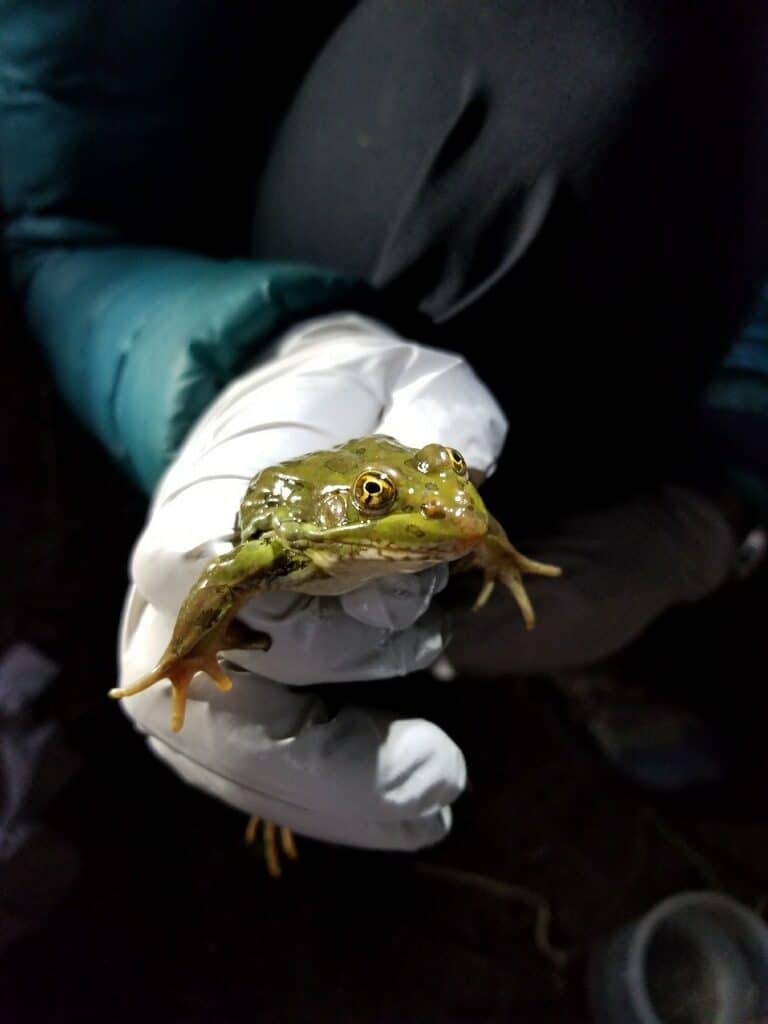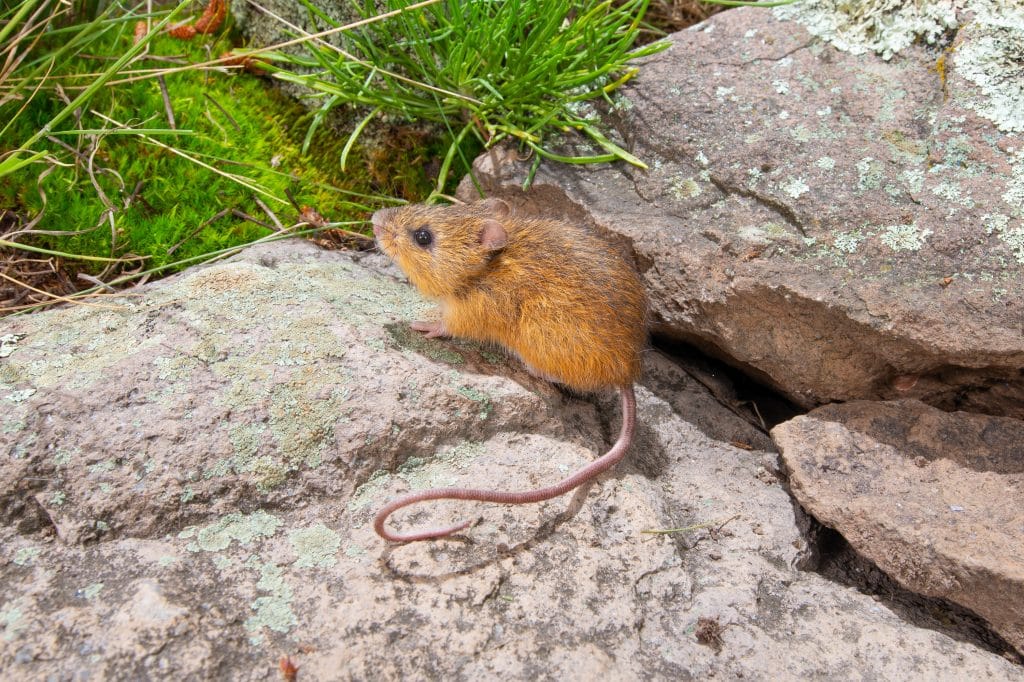Sept. 12, 2019
Three Northern Arizona University professors received grants through the Arizona Game and Fish Department to research ways to help threatened animal species in Arizona survive.
The grants—$67,000 to Joe Mihaljevic’s lab and $71,000 to Carol Chambers‘ and Faith Walker’s lab—are both part of the Identification, Inventory, Acquisition, Protection and Management of Sensitive Habitat sub-category. Competitive Heritage Fund grants go toward conservation efforts to protect endangered or threatened species.
The grants also provide opportunities for graduate and undergraduate students to conduct lab and field work, gaining hands-on experience while contributing to creating healthy ecosystems throughout the state.
Tracking a lethal virus in frogs
Mihaljevic, an assistant professor in the School of Informatics, Computing, and Cyber Systems and an affiliate of the Pathogen and Microbiome Institute, received $67,000 to study the transmission and progression of Ambystoma tigrinim virus (ATV), a type of ranavirus—a pathogen that is lethal to fish, reptiles and amphibians—in the Chiricahua leopard frog population that is endemic to the Southwest. This frog species is classified as federally threatened, with its populations at risk because of habitat loss and fragmentation as well as disease.
Mihaljevic, who studies ecological informatics and infectious diseases, collaborated with AZGFD, as well as other organizations, to test wild adult frogs for ranaviruses. To his surprise, many came back positive for ATV, a disease that should only infect salamanders and newts.
“The main goals of this project are: one, to document how widespread ATV infections might be in these threatened frog populations; two, to understand which frog life-stages (tadpoles, juveniles or adults) are most often infected; three, to understand whether ATV might put these populations at additional risk of extirpation; and four, to determine whether ATV infection can be observed in preserved museum specimens to establish more long-term trends,” he said.

The non-invasive field sampling will include swabbing the skin of tadpoles, juveniles and adult frogs and extracting DNA from those swabs. From there, Mihaljevic and his team can determine whether viral DNA is included in those samples. His team includes master’s student Kelsey Banister, who is leading the lab work, and master’s student Kathryn Cooney, who is leading the field work. Several undergraduate students are on the project: Diego Olivo and Braden Spencer, who are funded by the Urdea Undergraduate Research Grant; Monica Long, who’s doing research on an overlapping project with salamanders; and Nicole Crews, who is joining the lab this fall through NAU’s Interns-to-Scholars program.
“Amphibian disease continues to be a major challenge to Chiricahua leopard frog recovery efforts across their range,” said Audrey Owens, ranid project coordinator at AZGFD. “We are excited about Dr. Mihaljevic’s ranavirus research project because it has major implications for how we conserve and protect Chiricahua leopard frog populations in Arizona.”
Identifying opportunities to thrive for an endangered jumping mouse
Chambers, a professor of wildlife ecology, and Walker, a wildlife geneticist whose work is focused on non-invasive research, are studying the endangered New Mexico jumping mouse to identify movements, home ranges and dispersal potential. The goal is to use the collected data to identify opportunities to connect disparate habitats to help the species thrive.
This research matters because the jumping mouse is a genetically and morphologically distinct subspecies that is found only in the Southwest. Jumping mice populations are declining and even disappearing in some places of their usual range because of habitat loss attributed to livestock and water management, development, recreation and events like wildfires and drought.
This three-year study builds on previous jumping mouse research on which Chambers and Walker have collaborated. The team will live capture jumping mice, collect non-invasive (fecal) genetic samples and put radio collars on animals to track their movements, targeting areas along streams, rivers and lakes where the animals occur. DNA from buccal cells and fecal samples will be used to determine diet and dispersal with minimal impact to individual animals.

“The genetic and fieldwork our lab performs has provided so much new information on how the jumping mouse uses habitat,” Chambers said. “We will be looking at dispersal in the field using radio telemetry and gene flow in the Bat Ecology and Genetics Lab. The information we are already finding will help with conservation of the species.”
This grant will support one undergraduate research geneticist, with several students already involved in the broader research that’s informing this work.
Doctoral student Daniel Sanchez is studying the diet of this jumping mouse using DNA metabarcoding, undergraduate Austin Dikeman has been looking at the incidence of E. coli in this species and undergraduate student researchers Jacque Lyman and Samantha Hershauer have been involved in developing an eDNA assay to detect the jumping mouse from environmental samples. This eDNA assay was trialed in the field this summer; the team detected the species simply by swabbing plants along their home range.

Heidi Toth | NAU Communications
(928) 523-8737 | heidi.toth@nau.edu


